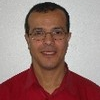New Trends in Growth Technique of Micro-Pulling-Down Method
A special issue of Crystals (ISSN 2073-4352). This special issue belongs to the section "Crystal Engineering".
Deadline for manuscript submissions: closed (10 July 2021) | Viewed by 8101
Special Issue Editors
Interests: crystal growth; solid state physics; phase transition; oxides
Interests: crystal growth phenomenon under high pressure and temperature conditions; multi-step crystallization; in situ observation technique; growth kinetics; thermodynamics; micro-pulling-down method
Special Issue Information
Dear Colleagues,
The micro-pulling-down (μ-PD) technique demonstrates some remarkable technological benefits such as small and modifiable furnace structures to control ambient temperature, uniform solute concentration, and shaping possibility. Hence, the μ-PD method is utilized as one of the most advantageous techniques available to grow a wide variety of industrial crystals for a large wide of applications, such as nonlinear optical elements and surface-acoustic-wave elements, scintillation and laser. Oxides are typical crystals grown from the melt under stationary stable regime by using the μ-PD method. Thus, important challenges, such as surface-morphological control, the formation of striations and growth ridges, limit segregation through controlling dopants concentration, the growth during the application of the external field, and so on, remain in the understanding of growth using the μ-PD method.
Today, commercial laser components using YAG fibers shape grown by µ-PD are available in the market. Therefore, the technology potential of µ-PD technique to bring solutions to the technological locks limiting the development of high power laser chain and others critical application is very promised.
Here, we invite researchers to contribute to the Special Issue of Crystals for the discussion and presentation of recent advances in the growth technique of the μ-PD method, ranging from practical experiments to computational simulation. The types of materials used are not restricted. The authors need to consider the keywords listed below. We expect to compile numerous papers.
Dr. Kheirreddine Lebbou
Dr. Harutoshi Asakawa
Guest Editors
Manuscript Submission Information
Manuscripts should be submitted online at www.mdpi.com by registering and logging in to this website. Once you are registered, click here to go to the submission form. Manuscripts can be submitted until the deadline. All submissions that pass pre-check are peer-reviewed. Accepted papers will be published continuously in the journal (as soon as accepted) and will be listed together on the special issue website. Research articles, review articles as well as short communications are invited. For planned papers, a title and short abstract (about 250 words) can be sent to the Editorial Office for assessment.
Submitted manuscripts should not have been published previously, nor be under consideration for publication elsewhere (except conference proceedings papers). All manuscripts are thoroughly refereed through a single-blind peer-review process. A guide for authors and other relevant information for submission of manuscripts is available on the Instructions for Authors page. Crystals is an international peer-reviewed open access monthly journal published by MDPI.
Please visit the Instructions for Authors page before submitting a manuscript. The Article Processing Charge (APC) for publication in this open access journal is 2100 CHF (Swiss Francs). Submitted papers should be well formatted and use good English. Authors may use MDPI's English editing service prior to publication or during author revisions.
Keywords
- Growth of single crystals
- Crystal growth mechanism
- Defects
- Convection
- Thermodynamics
- Computational simulation
- Theoretical calculation
Benefits of Publishing in a Special Issue
- Ease of navigation: Grouping papers by topic helps scholars navigate broad scope journals more efficiently.
- Greater discoverability: Special Issues support the reach and impact of scientific research. Articles in Special Issues are more discoverable and cited more frequently.
- Expansion of research network: Special Issues facilitate connections among authors, fostering scientific collaborations.
- External promotion: Articles in Special Issues are often promoted through the journal's social media, increasing their visibility.
- Reprint: MDPI Books provides the opportunity to republish successful Special Issues in book format, both online and in print.
Further information on MDPI's Special Issue policies can be found here.






